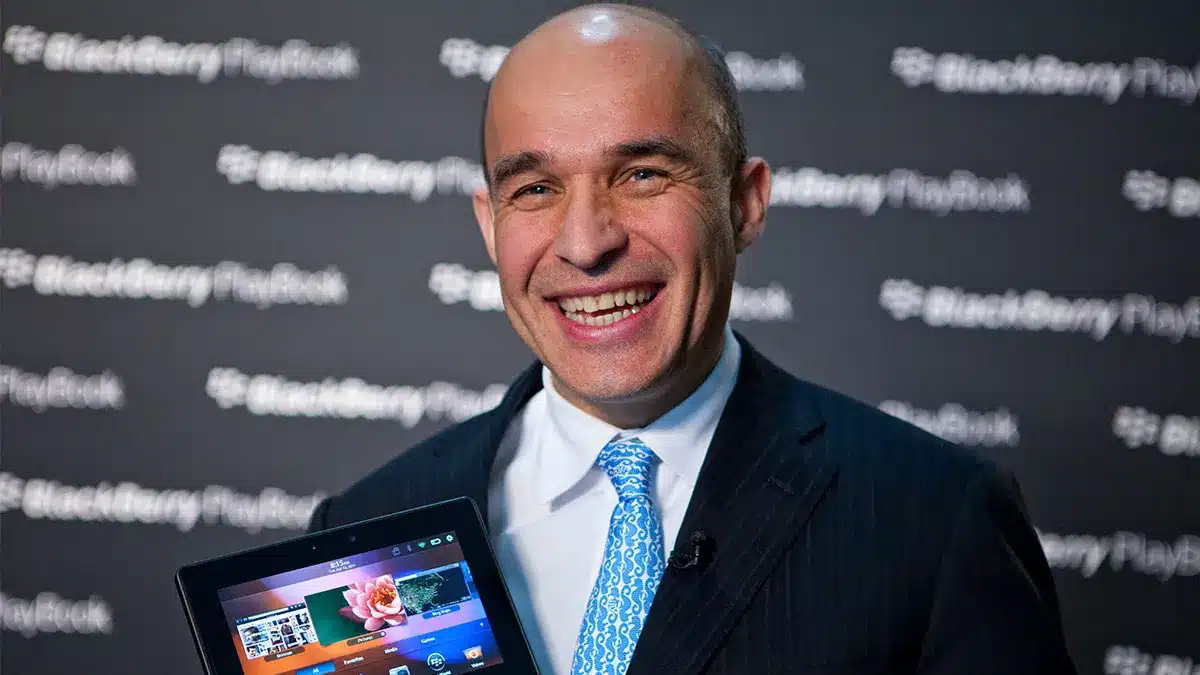Jim Balsillie Net Worth: Facts, Fortune & Financial Journey
Did the relentless pursuit of a National Hockey League franchise ultimately contribute to the downfall of one of Canada's most prominent tech titans? Jim Balsillie, a name once synonymous with Blackberry's meteoric rise, saw his personal fortune and professional standing dramatically altered in the wake of the company's struggles.
Born on February 3, 1961, in Seaforth, Ontario, Canada, Jim Balsillie's journey is a compelling narrative of ambition, wealth, and the volatile nature of the tech industry. He initially invested in Research In Motion (RIM) in 1992, recognizing the potential of wireless technology. His vision, coupled with shrewd business acumen, helped transform RIM into a global phenomenon, creating the iconic Blackberry smartphone. This period saw Balsillie amass a considerable fortune, reaching a peak net worth of $3.4 billion in 2008. At that time, he was among the wealthiest Canadians, his financial empire built on the foundation of RIM's success.
| Full Name: | James "Jim" Balsillie |
| Born: | February 3, 1961 (Age 63) |
| Birthplace: | Seaforth, Ontario, Canada |
| Citizenship: | Canadian |
| Education: | University of Waterloo, Harvard Business School |
| Profession: | Businessman, Philanthropist |
| Known For: | Former Co-CEO of Research In Motion (RIM), Founder of the Balsillie School of International Affairs |
| Net Worth (2023 Estimate): | $800 Million |
| Source of Wealth: | Technology investments, Philanthropy, RIM |
| Spouse: | Not publicly available |
| Children: | 2 |
| Website: | Centre for International Governance Innovation (CIGI) |
The story of Jim Balsillie, however, is not solely defined by his financial achievements. He is also a dedicated philanthropist, contributing significantly to various causes and institutions. He established the Balsillie School of International Affairs and the Centre for International Governance Innovation, demonstrating a commitment to education and global issues. Additionally, Balsillie founded the Waterloo Region Accelerator Centre (WRAC), further showcasing his entrepreneurial spirit and desire to foster innovation within the Waterloo Region.
Balsillie's wealth was built on a foundation of investments in technology companies, particularly Blackberry. Recognizing the growth potential in wireless technology early on, his initial investments in Blackberry and his leadership at RIM laid the groundwork for his wealth accumulation. The returns from these early investments propelled him to great heights. His financial empire extended beyond the realm of technology, revealing a smart and strategic approach to managing his wealth. He also served on the boards of several major Canadian companies, including the Bank of Montreal and the Royal Bank of Canada, demonstrating his influence in the Canadian business landscape.
The trajectory of Balsillie's net worth illustrates the dramatic swings that can occur in the tech industry. While he reached a peak of $3.4 billion in 2008, his fortune declined significantly as RIM struggled to compete with the rise of Apple's iPhone and Google's Android. In March 2011, his net worth was estimated at $1.8 billion, but by 2023, estimates place his net worth at around $800 million. The changing dynamics of the smartphone market, with Blackberry losing market share to its competitors, had a direct impact on Balsillie's personal wealth.
His net worth has been reported at various figures over the years. As of November 2023, some sources estimate his net worth to be $1.8 billion, reflecting the impact of his diverse income streams. However, other estimates indicate that his net worth is closer to $800 million as of 2023. These discrepancies highlight the challenges in determining the exact financial standing of individuals, particularly those with private financial holdings.
Beyond the numbers, Balsillie's story includes significant controversies and public scrutiny. He faced scrutiny regarding stock options and his ambitious bids to acquire an NHL team. His desire to bring an NHL team to Canada was well-documented. The pursuit of a hockey franchise, however, at times became a focal point of criticism, with some suggesting that it may have distracted from the core business of RIM during a critical period. His involvement in the NHL was also subject to controversy, adding another layer to his public image.
His story mirrors the broader trends of technological innovation, market competition, and the personal implications of high-stakes business decisions. He was a titan in the tech industry, his leadership at RIM transforming how the world communicated. The Blackberry, under his guidance, became a status symbol, a must-have device for executives and individuals. He envisioned a world connected by wireless technology, and he played a central role in making that vision a reality. However, this success was not without its complexities.
The decline of RIM's market share and Balsillie's corresponding financial losses underscore the volatile nature of the tech industry. The rapid pace of innovation, coupled with intense competition, can lead to swift changes in fortunes. The rise of the iPhone and Android, with their advanced features and user-friendly interfaces, proved to be formidable challenges for Blackberry. The company struggled to adapt quickly enough to these changes, and its market share plummeted.
Balsillie's story provides valuable lessons about adaptability, risk management, and the importance of anticipating market trends. His initial success was built on recognizing the potential of wireless technology. However, he and his team struggled to foresee the disruptive power of smartphones. It is worth noting that Mike Lazaridis, who was a co-CEO of RIM, also saw a decline in his net worth, albeit from a different starting point. The combined impact of the market shift affected both leaders.
Balsillie's philanthropy reflects a commitment to giving back. He founded the Balsillie School of International Affairs at the University of Waterloo and the Centre for International Governance Innovation. This demonstrates a long-term vision to support education, innovation, and global affairs. He has used his wealth to create opportunities for others, a testament to the philanthropic values.
Jim Balsillie's legacy is complex. He will be remembered as a visionary entrepreneur who built a global tech giant. His contributions to Canadian business and his philanthropic efforts are undeniable. The story is a reminder of the unpredictable nature of business and the importance of strategic foresight.
The exact current value of Jim Balsillie's net worth continues to be a topic of interest. While estimates vary, ranging between $1 billion and $2 billion in early 2024, it's evident that his financial success is a result of diverse income streams.
He founded the University of Waterloos Balsillie School of International Affairs, demonstrating a commitment to the fields of international relations, global governance, and related areas. This highlights Balsillie's ongoing commitment to education and the pursuit of knowledge beyond the business realm.
The tale of Balsillie's career is a reminder that success in the business world requires a confluence of factors: vision, shrewd decision-making, and an ability to adapt to changing circumstances. His early investments in technology were a key factor in his accumulation of wealth.
Balsillie's career showcases the fluctuations of the tech industry and the need to adjust to the evolving landscape. His story provides insights into the complex interplay of financial success, ambition, and the responsibilities of wealth. It reminds us that the accumulation of wealth is often linked to opportunities. His contribution has undoubtedly left a mark.
In conclusion, Jim Balsillie's narrative remains a fascinating study of entrepreneurship, technological change, and the complex interplay of business, philanthropy, and personal ambition. The fluctuations in his net worth serve as a reminder of the dynamic nature of the business world.


